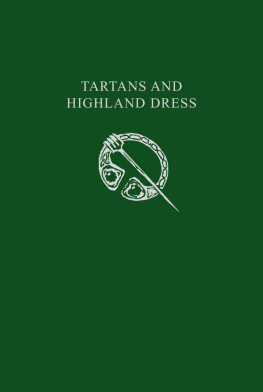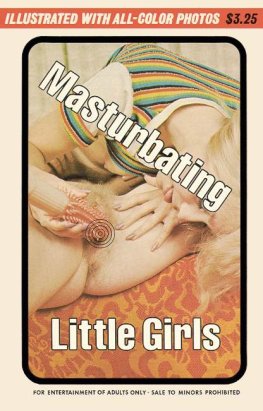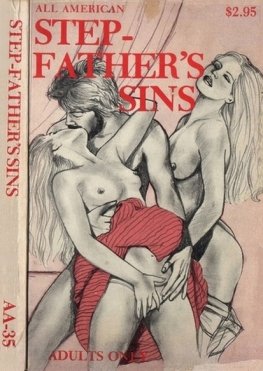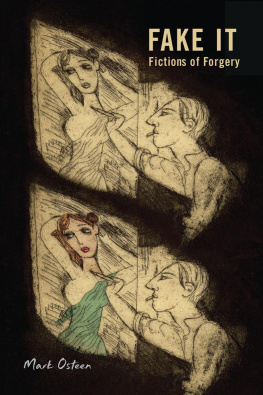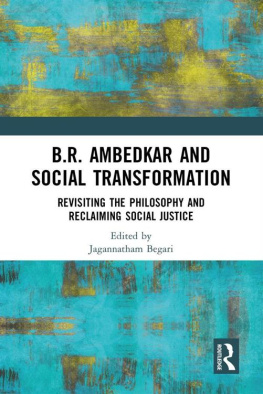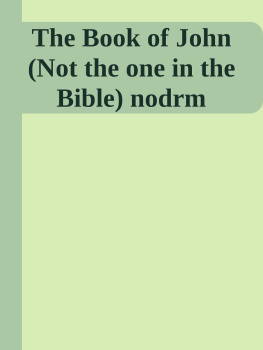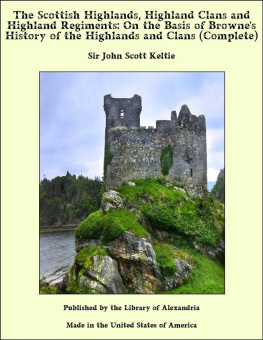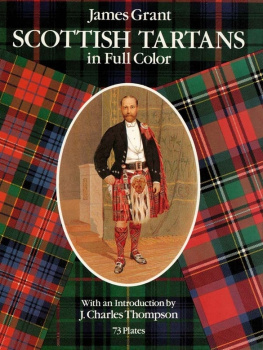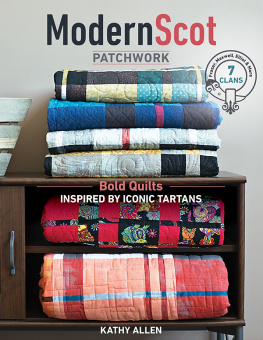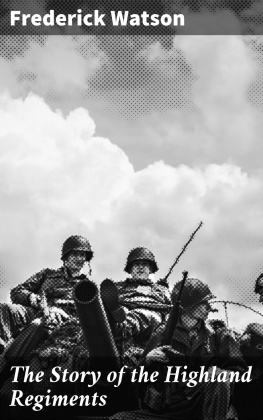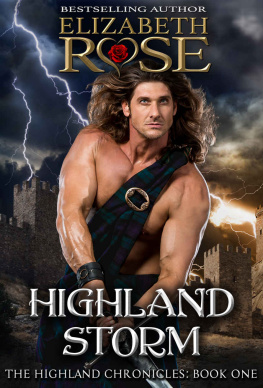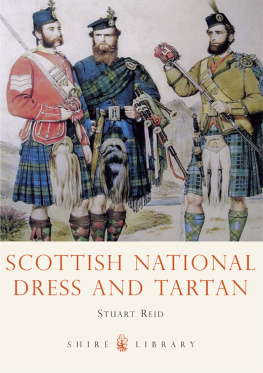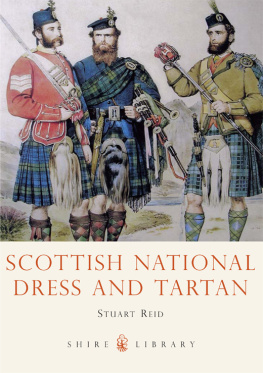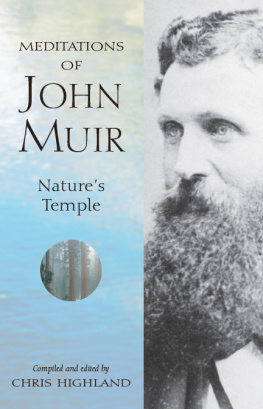Published by Collins
An imprint of HarperCollins Publishers
Westerhill Road
Bishopbriggs
Glasgow G64 2QT
www.harpercollins.co.uk
2nd edition 2016
Collins 1960
Originally published in 1961 as Tartans and Highland Dress by C. R. MacKinnon of Dunakin, F.S.A. Scot.
Collins is a registered trademark of HarperCollins Publishers Ltd
All rights reserved under International and Pan-American Copyright Conventions. By payment of the required fees, you have been granted the non-exclusive, non-transferable right to access and read the text of this e-book on screen. No part of this text may be reproduced, transmitted, downloaded, decompiled, reverse engineered, or stored in or introduced into any information storage and retrieval system, in any form or by any means, whether electronic or mechanical, now known or hereafter invented, without the express written permission of HarperCollins.
The contents of this publication are believed correct at the time of printing. Nevertheless the publisher can accept no responsibility for errors or omissions, changes in the detail given or for any expense or loss thereby caused.
A catalogue record for this book is available from the British Library
Source ISBN: 9780008210601
Ebook Edition OCTOBER 2016 ISBN: 9780008222635
Version: 2016-10-25
HarperCollinsPublishers has made every reasonable effort to ensure that any picture content and written content in this ebook has been included or removed in accordance with the contractual and technological constraints in operation at the time of publication.
There can be few, if any, forms of national dress which are known and respected throughout the world as much as that of the Scottish Highlander. Alas, it is, however, true to say that there are few forms of national dress which are so constantly placed before the public eye in so many incorrect forms.
The reader of this book will find not only details of what is correct and what is not, but will discover a great deal of most interesting history relating to the dress of the Scottish Highlander.
The book may be used as a guide by those who are uncertain whether they should or should not wear Highland dress. For us who live in the Highlands of Scotland, our dress is something of which we are extremely proud, and it hurts us to see it so often abused. I trust Mr. MacKinnons book will help to remove some of the misconceptions.
CHARLES H. F. MACLEAN
OF DUART AND MORVEN
Duart Castle,
Isle of Mull, Argyll
CONTENTS
LINE DRAWINGS IN TEXT
PLATES
Hunting Maclean Tartan
Balmoral Tartan
Rob Roy Tartan
Douglas Tartan
MacKenzie Tartan
Cameron of Erracht Tartan
Battle of Culloden by Morier
There is probably no ancient form of dress so widely used and worn to-day as the dress of the Scottish Highlander. Apart from those who wear it regularly as normal dress, there are hundreds of thousands of people all over the world who own Highland dress and wear it on certain special occasions. It is a dress loved by almost everyone who has had occasion to wear it, and the interest in it is great.
There are two common sources of information about Highland dress. The first is the series of excellently illustrated catalogues issued by many of the Scottish firms who specialise in its manufacture. The other is the Scottish press, where from time to time articles appear about the antiquity and authenticity (or otherwise) of Highland dress, and about how to wear it. The sources frequently conflict. The tailors catalogue, for instance, may blithely describe the kilt as the ancient dress of the Highlander, while at the same time someone is writing learnedly in the national press to show that it is really the invention of an English major called Rawlinson. For the non-expert it can be very confusing. The purpose of this book is therefore to tell the story of the dress we now wear as Highland dress, to summarise the conflicting arguments about it, and to offer advice on how to wear it.
It will be seen, ultimately, that this is a form of dress which has evolved naturally from the early dress of the Highlanders, and that there is nothing bogus about it as is often inferred by its (spindley-shanked?) detractors.
There is to-day a revival of this dress, especially in Scotland, and many of our modern young men are wearing it as their normal daily habit. They are wearing it as it should be worn, shunning the travesties which from time to time have detracted from it, and they are quickly removing it from the category of fancy dress, into which at one stage it almost descended, and are giving it a new and powerful lease of life. Scotland owes these people a debt of gratitude for restoring the dignity of the dress which for at least two centuries has stirred the patriotic imagination of every Scot wherever he has chanced to live.
C. R. MACKINNON OF DUNAKIN
T HE significance of tartan to-day is both national and international. The interesting system of making colourful and intricate chequered patterns by weaving the same design in warp and weft, and so producing from a few basic colours a whole host of symmetrically arranged shades, is Highland in origin. But what came from the Highlands no longer belongs exclusively to the Highlands, and the Gael has given to the world what was once regarded by the sophisticated Lowlanders as the mark of the barbaric mountaineer.
It is, as many writers have been at pains to point out, a great compliment to the old Highlanders that their breacan has been enthusiastically received by peoples of all colours, races and creeds, all over the world. It is hardly less remarkable that Lowlanders are now proud to wear the emblem of clansmen whom their ancestors would cheerfully and unthinkingly have destroyed, if they had been able. The barriers of religion, politics, race and custom that once divided Scotland into two warring elements, Highland and Lowland, have been swept aside. Many of the great Lowland houses now have their own tartans, and people without any Highland blood whatever regard the tartan as the badge of their Scottish nationality. Indeed, as long ago as 1746, when that staunch old Jacobite, Lord Balmerino, died on the scaffold for his part in attempting to restore the Stuarts to the throne in 1715 and 1745, he wore a tartan cap to signify, in his own words, that he died a Scotsman. It is important therefore to remember when dealing with clan tartans that what originated in, and once belonged fairly exclusively to the Highlands, now belongs to Scotland as a whole, and is enthusiastically worn all over the globe.
The love of the tartan by people other than Scots is not new. In 1711 it was reported that tartan was being exported to England and that in London there was a trade in tartan bed hangings, curtains and nightgowns. Thus the tartan shirts so popular to-day have a strong link with antiquity. (Incidentally, the correct word is tartan and not plaid or plad. The plaid is a long heavy blanket-like garment, usually, but not necessarily, of tartan.) Two centuries ago, the trade of exporting tartan to England was apparently thriving, for in 1740 two cargoes from Leith to London included 9,406 yards of tartan.
The exact nature of the Highlanders gift to the world is interesting. This account of it is given by D. C. Stewart in The Setts of the Scottish Tartans:
How few colours are actually employed in a tartan is not always realised. Each colour appears not only in its pure or solid form, but also in an equal blend with each other colour. Thus, where only three are used, six result; where four are used, ten. The formula by which the resultant number is expressed is (x + 1) x/2 that is to say, the number of colours employed, plus one, is to be multiplied by half that number. However many colours are used there cannot be a mixture of more than two of them in any part of the web, nor can two pure colours lie side by side. These are not arbitrary conditions, but arise from the fact that the weft is identical with the warp, in both of which the threads are used in bands of unbroken colour.

